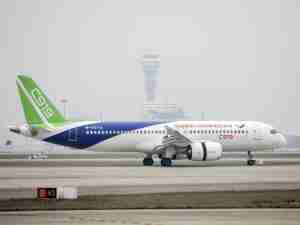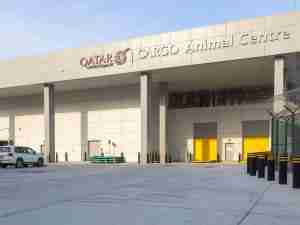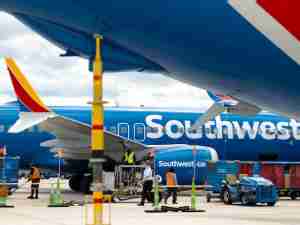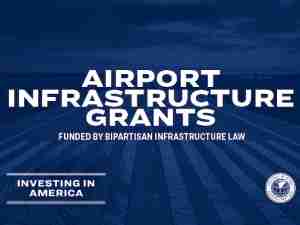Flights to Houston Restart in Early Symbol of Halting Recovery
By: | Aug 31 2017 at 12:00 AM | Air Cargo
Houston’s airports began trudging back into operation Wednesday, with the first commercial traffic in three days offering a faint symbol of recovery from the devastation of Hurricane Harvey.
United Airlines and Delta Air Lines started some service and others are expected to soon follow suit. But so far it’s just a trickle. United, which has a major hub at George Bush Intercontinental Airport, is initially scheduling just three daily arrivals and three departures. On a typical day, 480 United flights take off.
The slow pace reflects what’s likely to be a slog of a rebound for most businesses in Harvey’s deadly path. After more than 50 inches of rain, Houston is a city of islands. Flood levels were dropping as the sun came out but some neighborhoods remain swamped. Whether companies can function depends largely on the luck of location.
“It’s a tale of two cities,” said Andrew Segal, chief executive officer of Boxer Property Management Co., which owns or manages 55 office buildings in Houston. “If you’re flooded and lost power, it’s horrible. If not, you’re back to work in a day or two.”
Commerce all but shut down during the initial deluge from Harvey, which hit the Texas coast late last week as a Category 4 hurricane and then dumped record rainfall on the nation’s fourth-largest city and heart of its oil-and-gas industry. A few businesses never closed and some were only briefly shuttered, with McDonald’s Corp. flipping burgers again at dozens of its restaurants by Sunday. Wednesday saw more grocery stores turning the lights back on.
But the Port of Houston and 10 other Gulf Coast ports of call remained shut, stranding 28 tankers laden with more than 18 million barrels of foreign crude offshore. The Port of Corpus Christi is targeting a Sept. 4 return to service. In Houston, there’s no timetable for docking to start up. Union Pacific Corp. and Kansas City Southern are working to restore rail service along the Texas coast.
‘Slow Journey’
With Harvey making a second landfall Wednesday morning near the Texas-Louisiana border, the number of oil refineries that have gone off line expanded to 14. They included the nation’s largest in Port Arthur, and it’s too soon to predict when all that capacity will return.
“Anybody who tells you they know exactly what the situation is with every piece of their business, I’ll be honest with you—it’s just not possible,” said Marc Cannon, a spokesman for AutoNation Inc., which has 17 retail stores and seven collision centers in the Houston area that it’s planning to open Thursday. “It’s going to be a very slow journey back to being fully up and running.”
Getting the airports into service took days. Employees couldn’t make it to work. Before Wednesday only a few non-commercial flights landed with relief supplies and airline personnel. Ground transportation is still a challenge.
“You need to make sure there’s a way to get out of the airport complex,” said Ross Feinstein, a spokesman for American Airlines Group Inc. “We’re don’t want to fly them to a place and utterly desert them there.”
‘Open Quickly’
American plans to start some flights Thursday. Southwest Airlines Co. said it would resume limited service Sept. 2 from William P. Hobby Airport.
“Just because it’s stopped raining doesn’t mean the impact is over yet,” said Mark Drusch, an airline consultant at ICF and former executive at Delta and Continental Airlines, which was later acquired by United. “It’s not going to be a full operation without concerns probably for another five days.”
Harvey could end up being the most costly weather disaster in U.S. history, with its relentless rains flooding thousands of homes and crippling an energy hub where major employers include Exxon Mobil Corp., Chevron Corp. and Halliburton Co.
Greater Houston includes eight counties, and is home to almost 1 in 12 U.S. workers. The recovery effort across the region could last for years. But businesses big and small should do all in their power to get back into action, said Jeff Schlegelmilch, deputy director of the National Center for Disaster Preparedness at Columbia University’s Earth Institute.
“It’s in everyone’s best interest for things to get open quickly,” he said. “The economic engine drives the community—and the longer a business stays closed the more likely it is that it’s never going to reopen.”
Replenishing ATMs
Among those that didn’t close was event-designer Prashe Decor, whose 40,000-square-foot warehouse was spared by the flooding. It had weddings on its books, including in Iowa next week; one in Port Arthur was canceled but a pre-nuptials party in Houston will still take place Thursday, though in a venue for 200 guests rather than the 1,200 originally invited.
“In a service-oriented and time-sensitive business, shutting down I don’t think is an option,” owner Pramel Shah said. “In the future we will be more proactive in telling people that in an unpredictable city like Houston, they need to be getting event insurance.”
Houston had advance warning that Harvey was on its way, and companies prepared. Cullen/Frost Bankers Inc. replenished its ATMs with cash beforehand and in the immediate aftermath relied on video from security cameras to assess damage at its 33 branches. “They’re supplied for normal business levels,” said Bill Day, a bank spokesman. “But there’s not much normal happening in Houston these days.”
Auto retailer Group 1 Automotive Inc. rented parking space and moved thousands of cars onto high ground before Harvey’s arrival. Kroger Co. and Wal-Mart Stores Inc. sent in thousands of extra truckloads of goods.
After stores started reopening “bread was probably our biggest area of need,” said Todd Manley, a regional Wal-Mart vice president. Employees had to take extreme measures. “We were even showing customers recipes for how to make their own bread at home with flour and yeast, the old fashioned way.”
Queues formed outside some markets around town; staffed with skeleton crews, they let people enter in small groups. “We metered customers in,” Manley said.
People were thrilled to be able to restock, said Scott McClelland, president of the Houston division of the Texas chain H-E-B, which had put most of its 80 outlets back into service by Wednesday. “They were coming over to hug me.”
Regulars at the Hay Merchant had similar reactions when the pub in the Montrose district on Monday started pouring the 80 beers it has on tap. The brews have held out, though by Tuesday all the burgers and chicken wings on hand were gone.
“It was very clear that our neighbors were a bit stir crazy,” said Lindsey Brown, the pub’s publicist, who has been pulling duty as a hostess and table buser. “They were looking for a bit of normalcy. We’ve had a lot of people say exactly that—thank you for opening because it feels normal again.”











